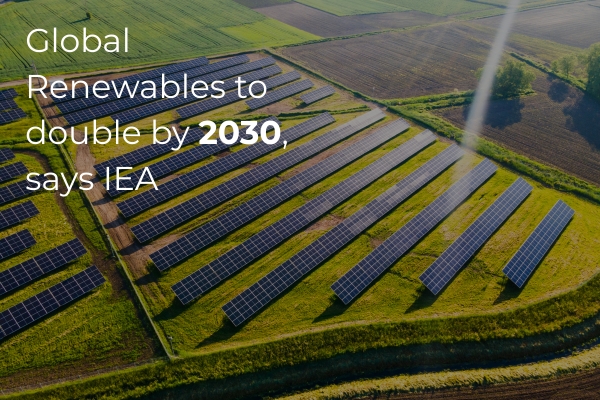Solar PV drives 4600GW surge despite supply chain strains
Global renewable power capacity is set to more than double by 2030, driven by rapid solar PV growth and expanding clean energy policies worldwide, according to the International Energy Agency’s (IEA) Renewables 2025 report.
The IEA forecasts an additional 4600GW of renewable capacity by the end of the decade — equivalent to the combined generation capacity of China, the European Union, and Japan. Around 80% of this expansion will come from solar PV, followed by wind, hydropower, bioenergy, and geothermal energy.
Solar PV Leads the Way
Falling costs, faster permitting processes, and growing policy support are positioning solar PV as the dominant force in renewable expansion. Growth will accelerate in emerging markets such as India, Southeast Asia, Pakistan, and Saudi Arabia, with India expected to become the second-largest renewables market after China.
At the same time, corporate power purchase agreements (PPAs) and merchant renewable projects are set to account for nearly 30% of global capacity additions by 2030 — double last year’s share. Developers worldwide have maintained or increased their 2030 deployment goals, signalling strong confidence in long-term renewable growth.
Market Shifts and Challenges
While the global outlook remains positive, the IEA has slightly revised its overall forecast downward due to policy and market changes in the United States and China. In the US, the early phase-out of federal tax incentives has reduced expected growth by almost 50%, while China’s shift from fixed tariffs to auction-based pricing has created additional headwinds.
Meanwhile, offshore wind projections have been adjusted about 25% lower than last year due to supply chain bottlenecks, policy uncertainty, and cost inflation. However, Europe and India are expected to regain momentum as permitting reforms and new manufacturing capacity begin to ease constraints.
Powering the Global Energy Transition
Despite ongoing challenges, solar PV remains the lowest-cost generation option in most markets. Wind, hydropower, bioenergy, and geothermal will continue to play vital roles in providing grid stability and balancing the increasing share of variable renewables.
The IEA has also emphasised the need for major investment in electricity grids, storage, and flexible capacity to ensure secure integration of renewable power — particularly as curtailment and negative pricing events become more frequent in high-renewables markets.
The Opportunity Ahead
For the renewables workforce, this surge represents a global opportunity. As solar and wind deployment scale up, demand for skilled professionals in project development, engineering, grid integration, and asset management will rise sharply.
At LSP Renewables, we’re proud to support the organisations and professionals driving this transition. Whether you’re looking for your next role in the solar sector or seeking the talent to build your renewable energy teams, our specialists are here to help.
👉 Contact Scott Thomson, Head of Solar at LSP Renewables, to discuss opportunities in the global solar market.
